Abstract
A description is given of the functional morphology of the intrinsic joints of the foot, with particular reference to the primates, and an attempt is made to define the key human derived features. In the human subtalar joint the compromise axis has become reoriented into a very elevated position and more nearly in line with the functional foot axis than it is in subhuman primates. This provides for torque of the talus, and so the supported body weight, about the axis, during the stance phase of gait. In the subhuman primates the very oblique subtalar axis is important in inverting the foot into a grasping attitude. In subhuman primates the transverse tarsal joint complex plays an important role in supination of the forefoot, which complements inversion at the subtalar joint complex in achieving the ideal grasping position. This movement is only rendered possible by a helical action at the subtalar joint complex. In man the calcaneocuboid joint has been remodelled so as to bring the lamina pedis into a close-packed position during the latter part of the stance phase of gait. The joints between the cuneiforms and the cuboids, and the associated tarsometatarsal joints show significant modifications in man.
Full text
PDF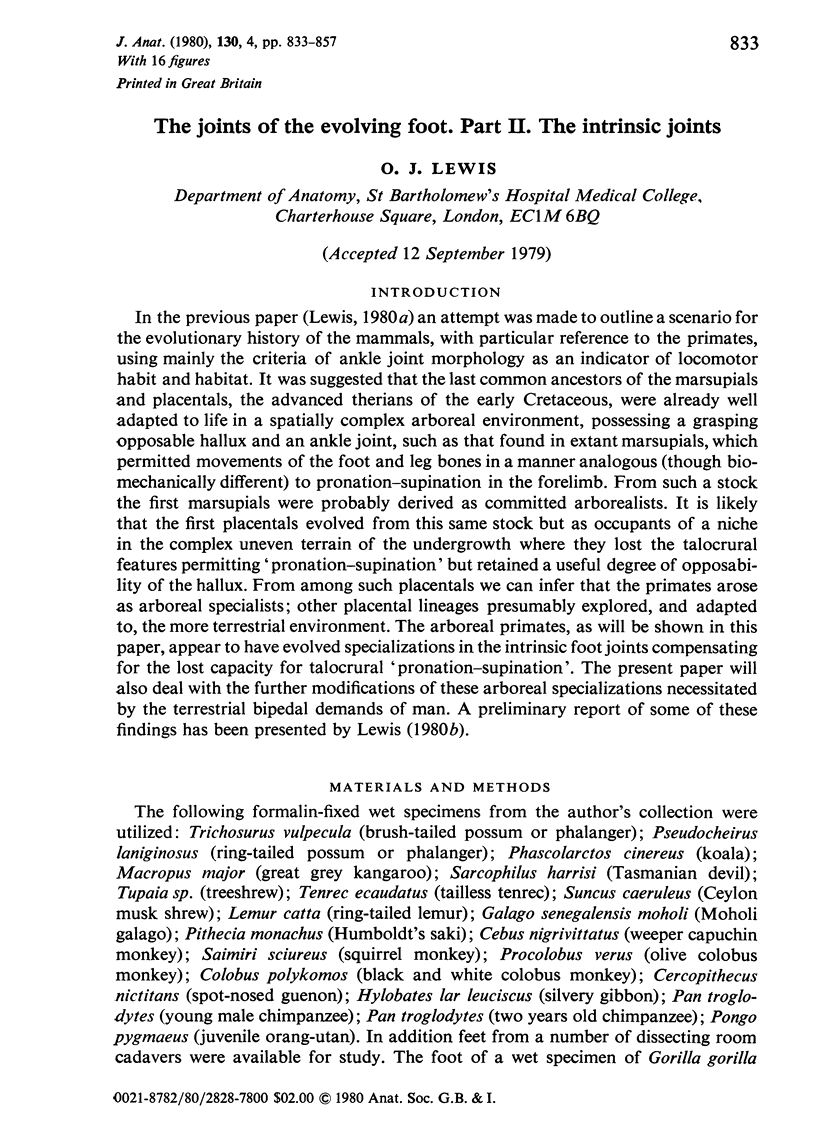
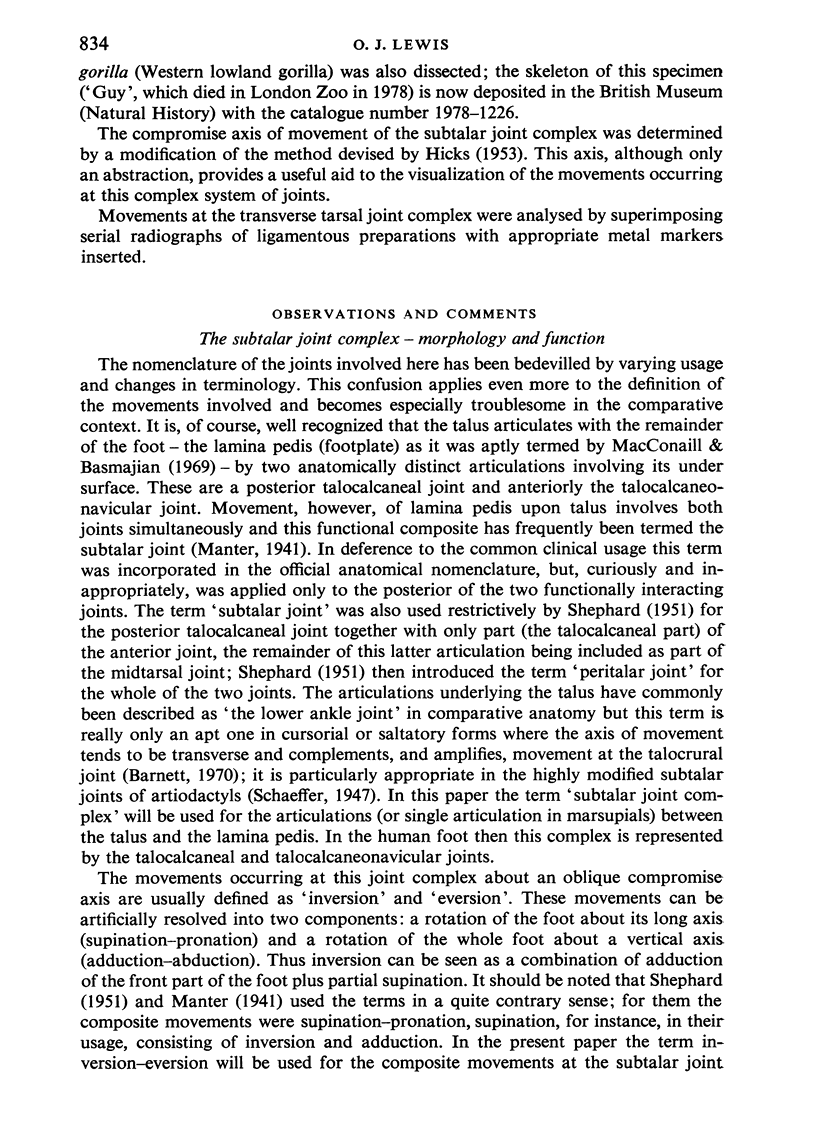

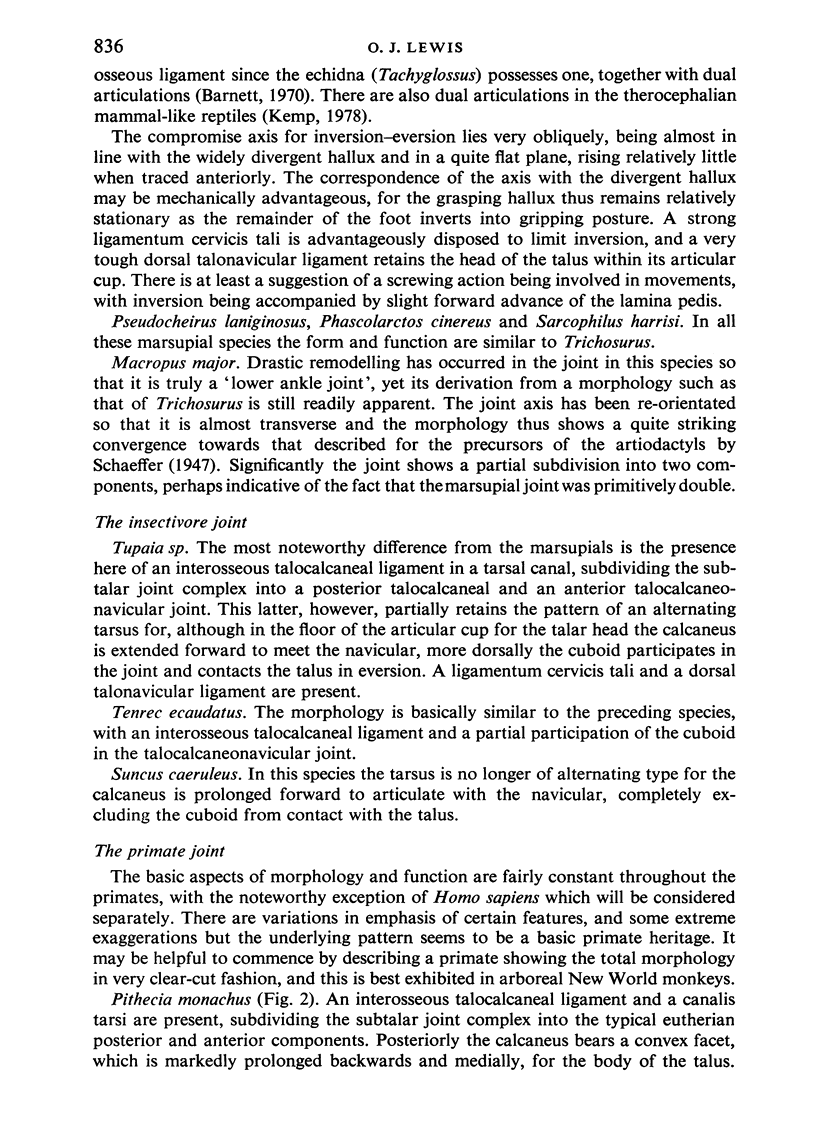
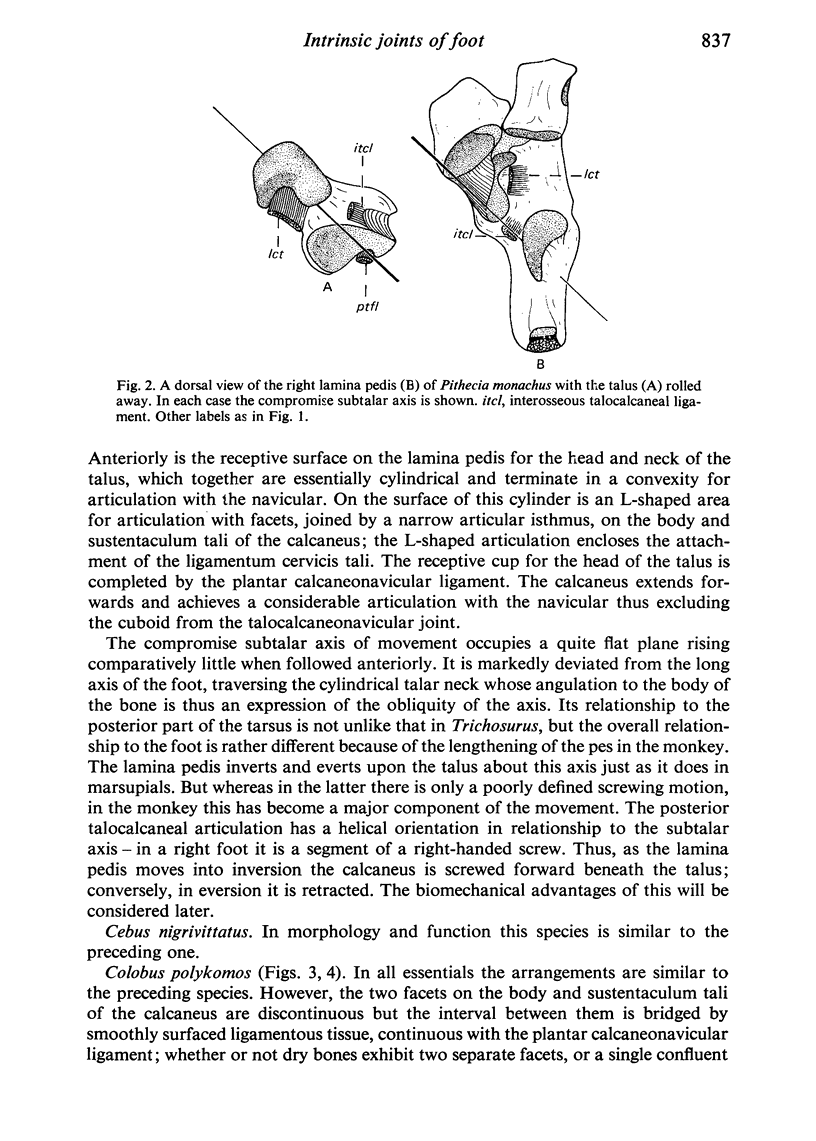
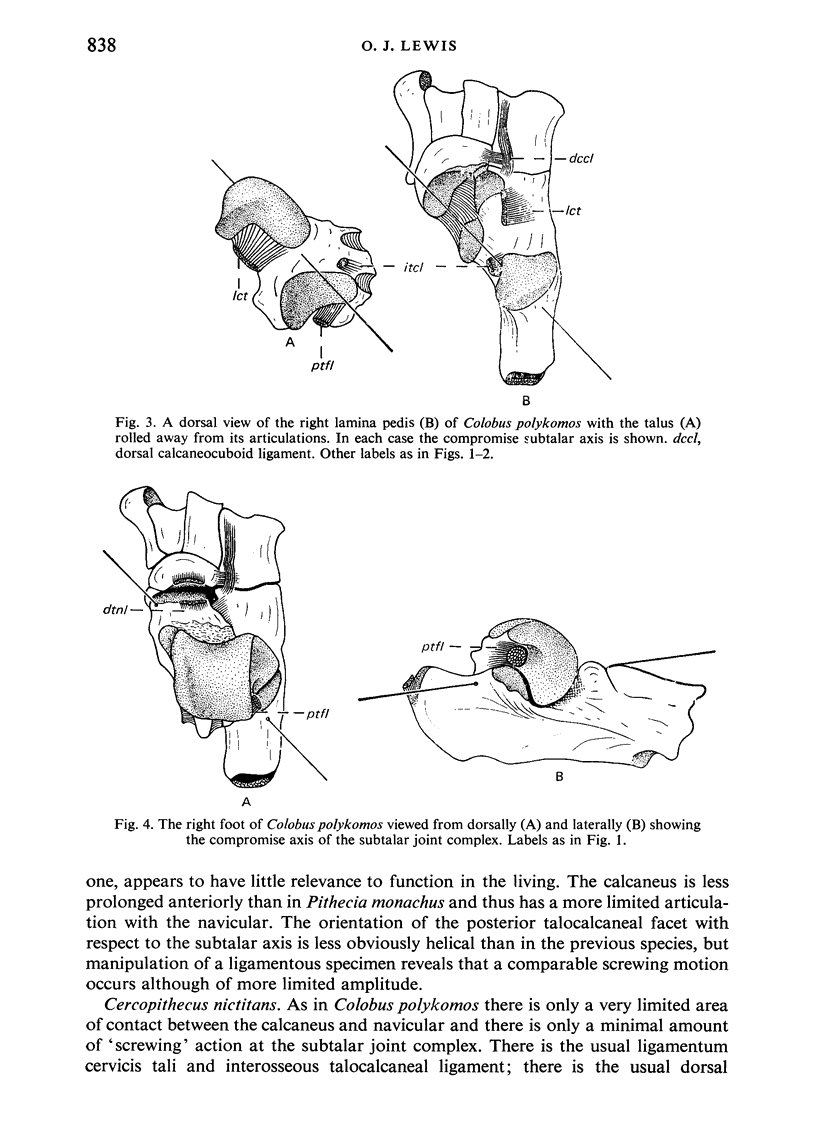
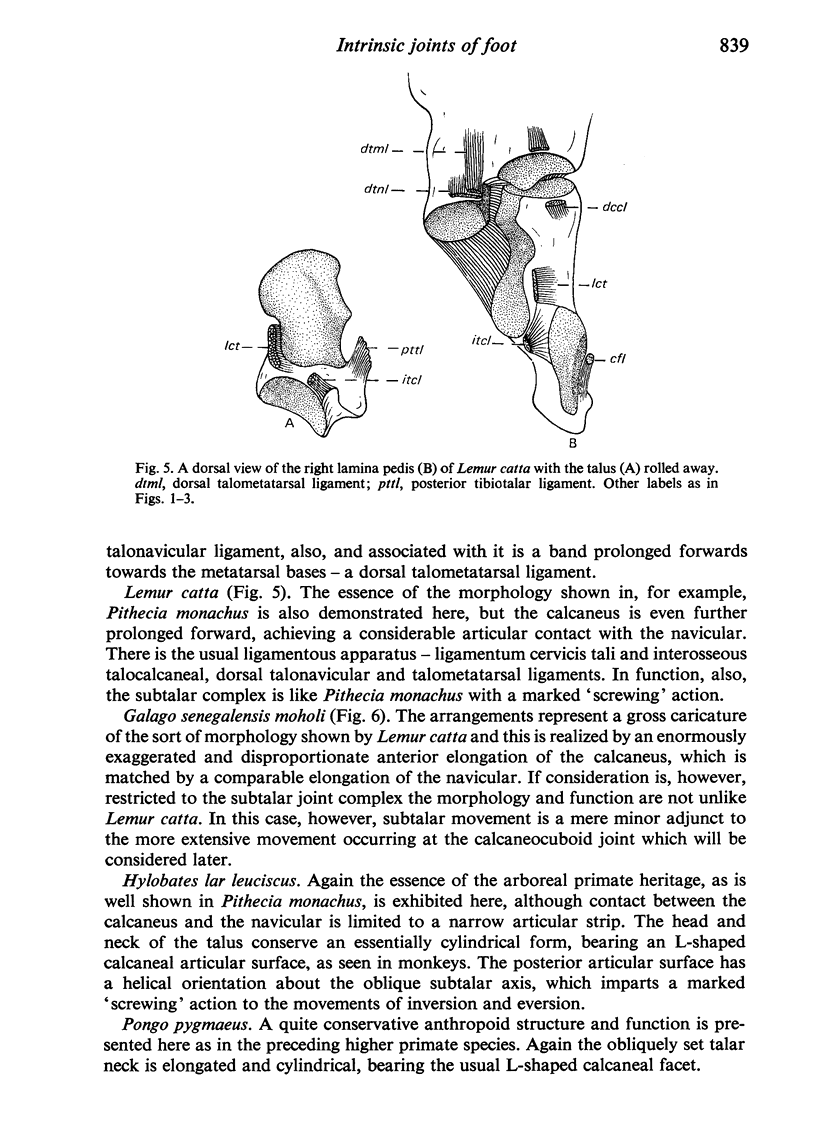
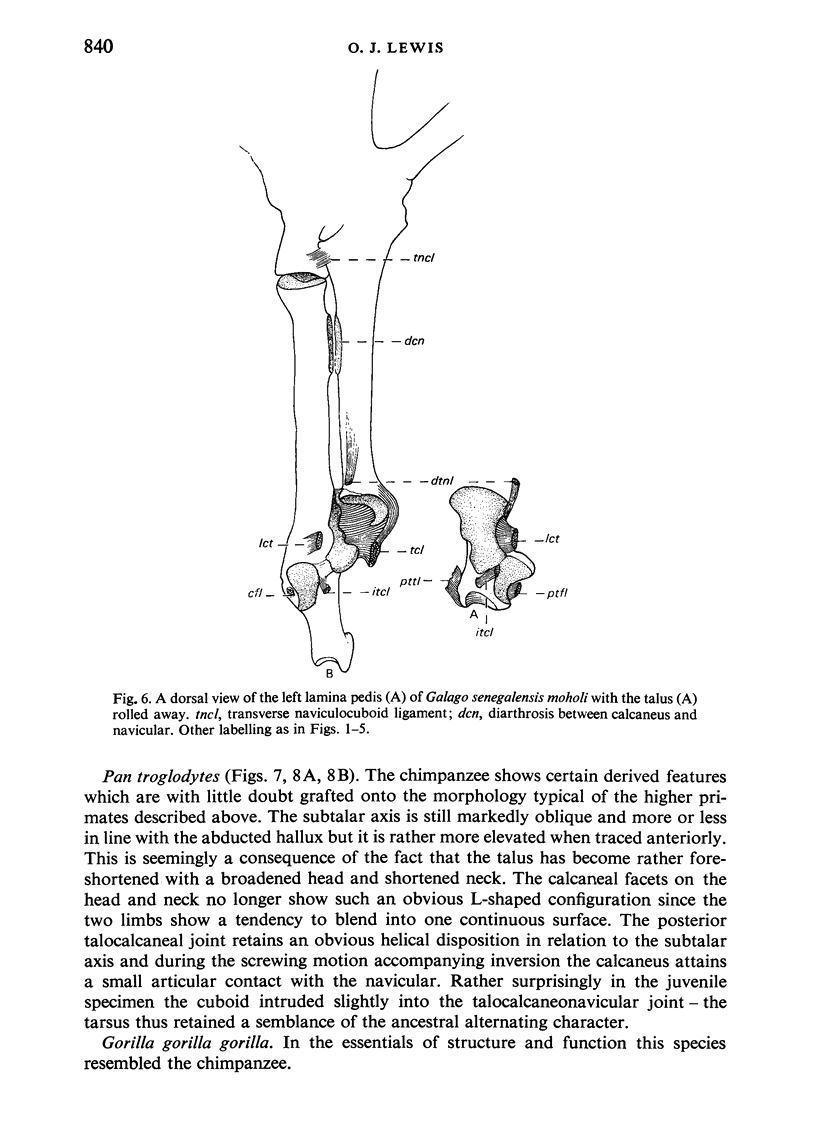

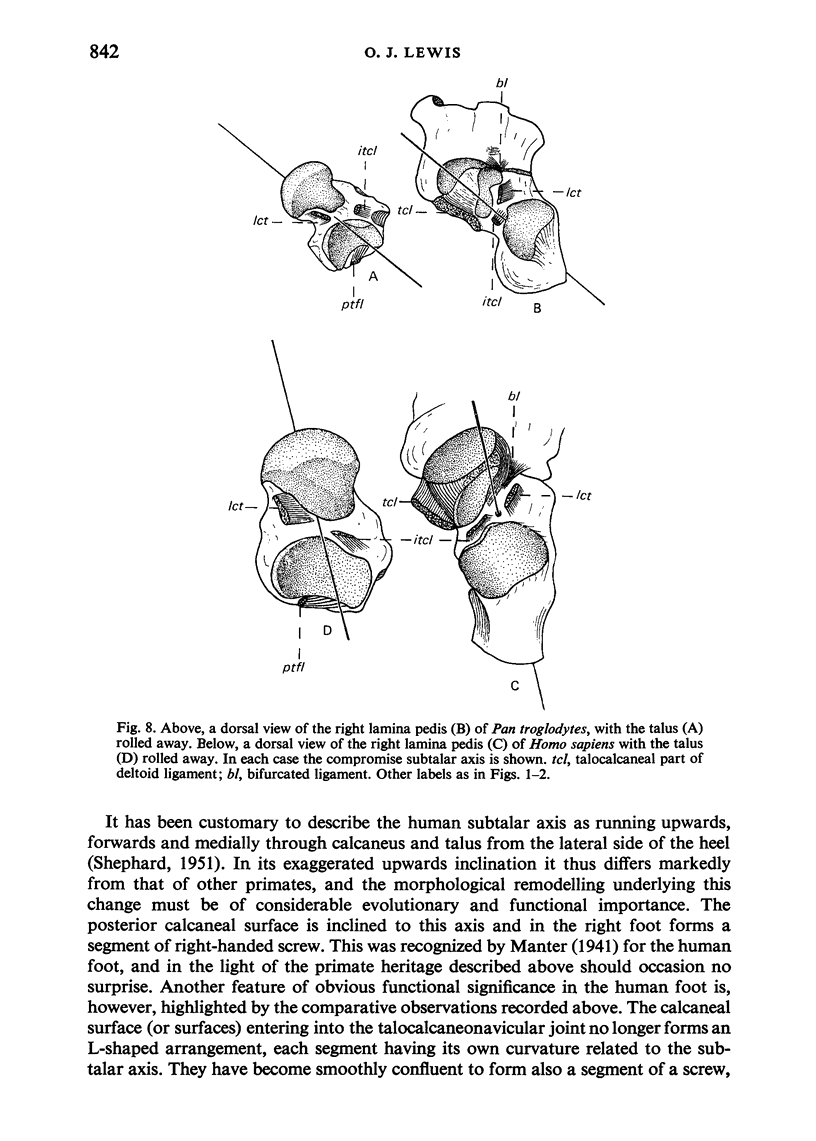
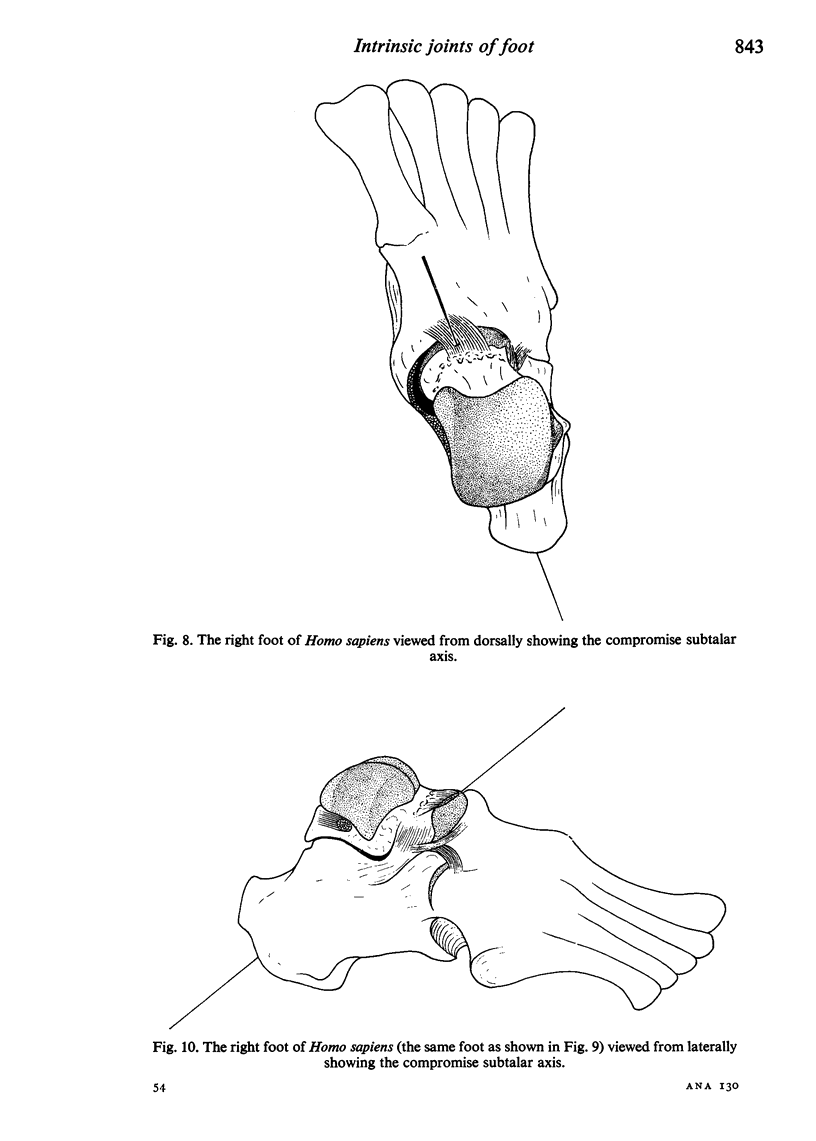


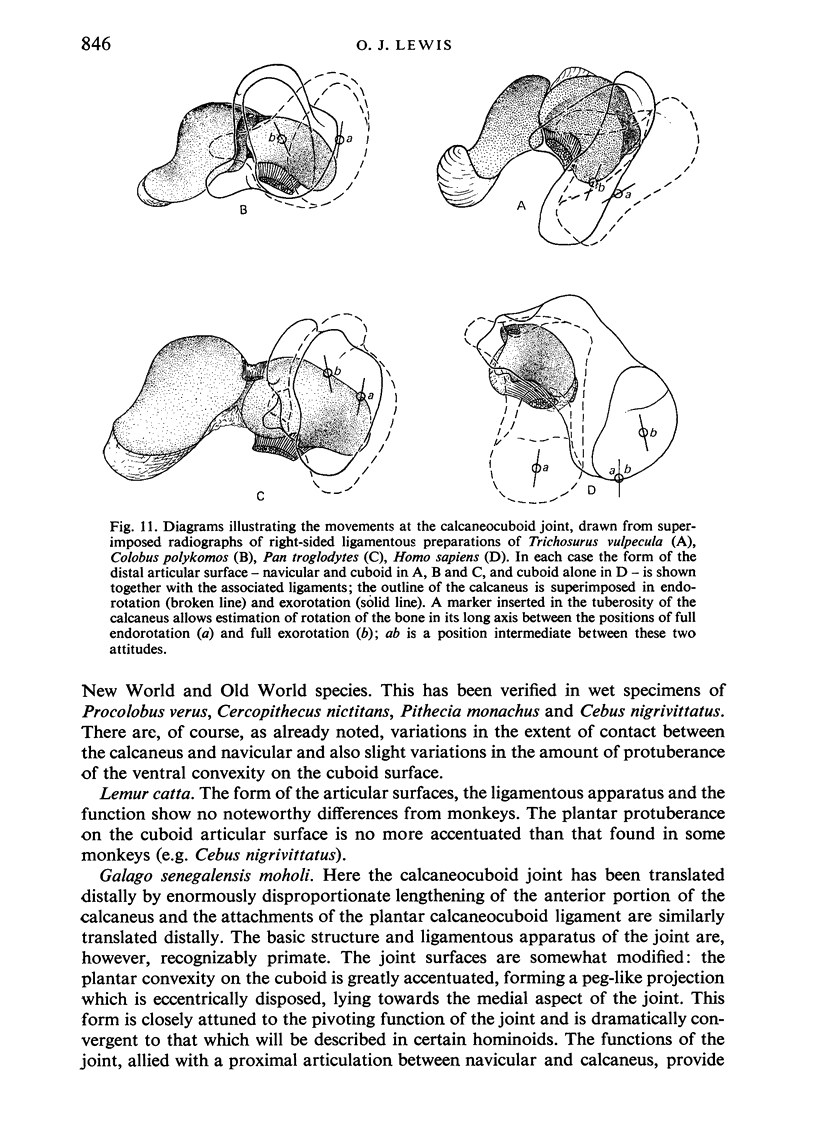

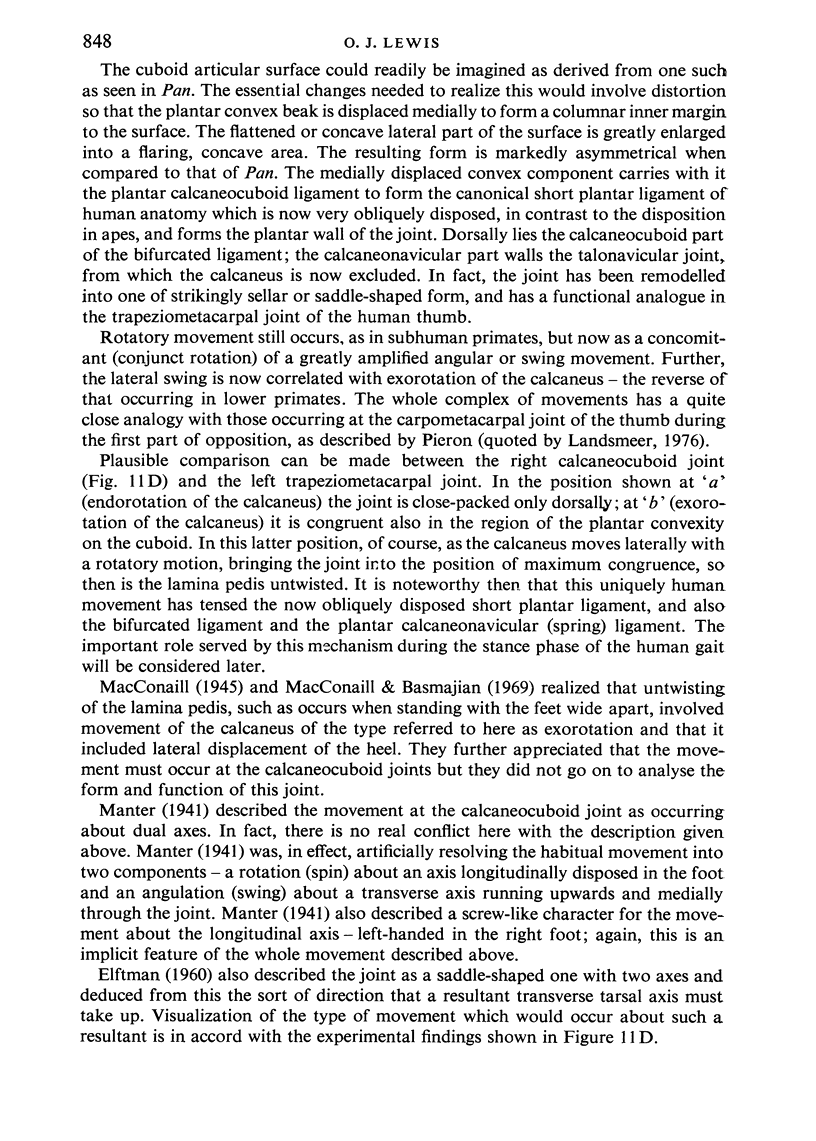
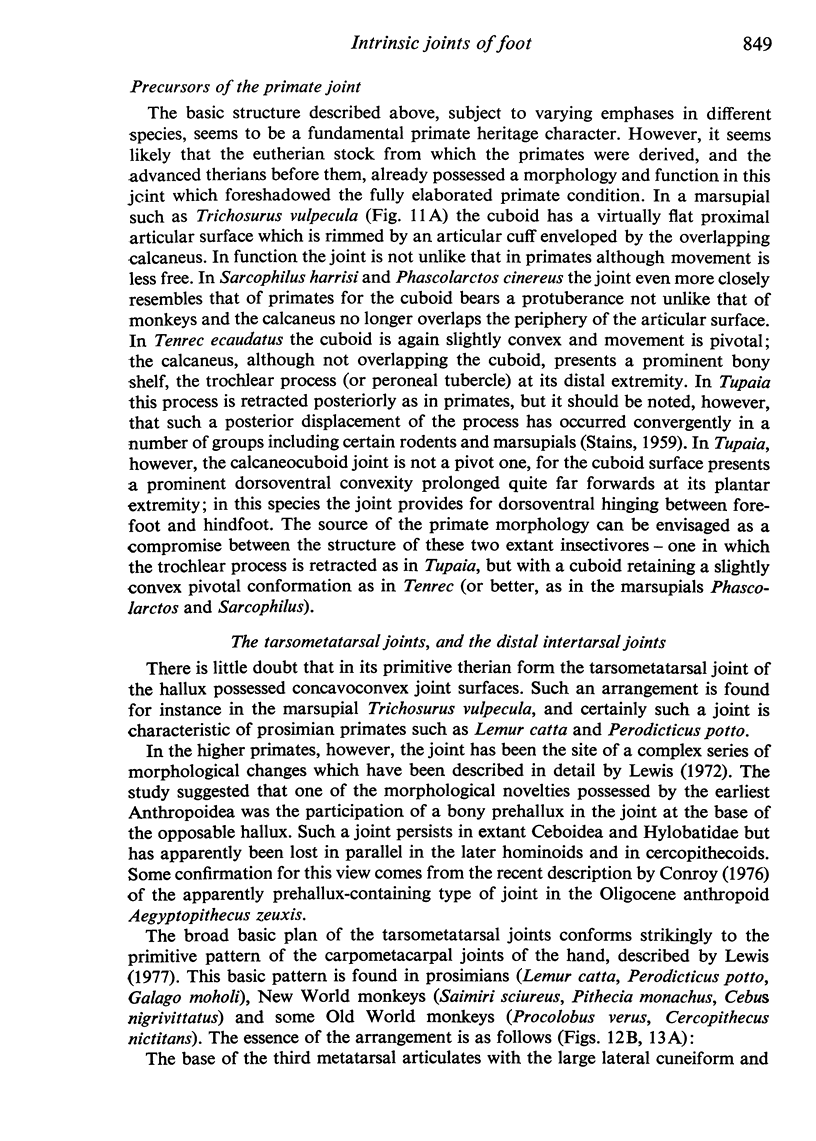
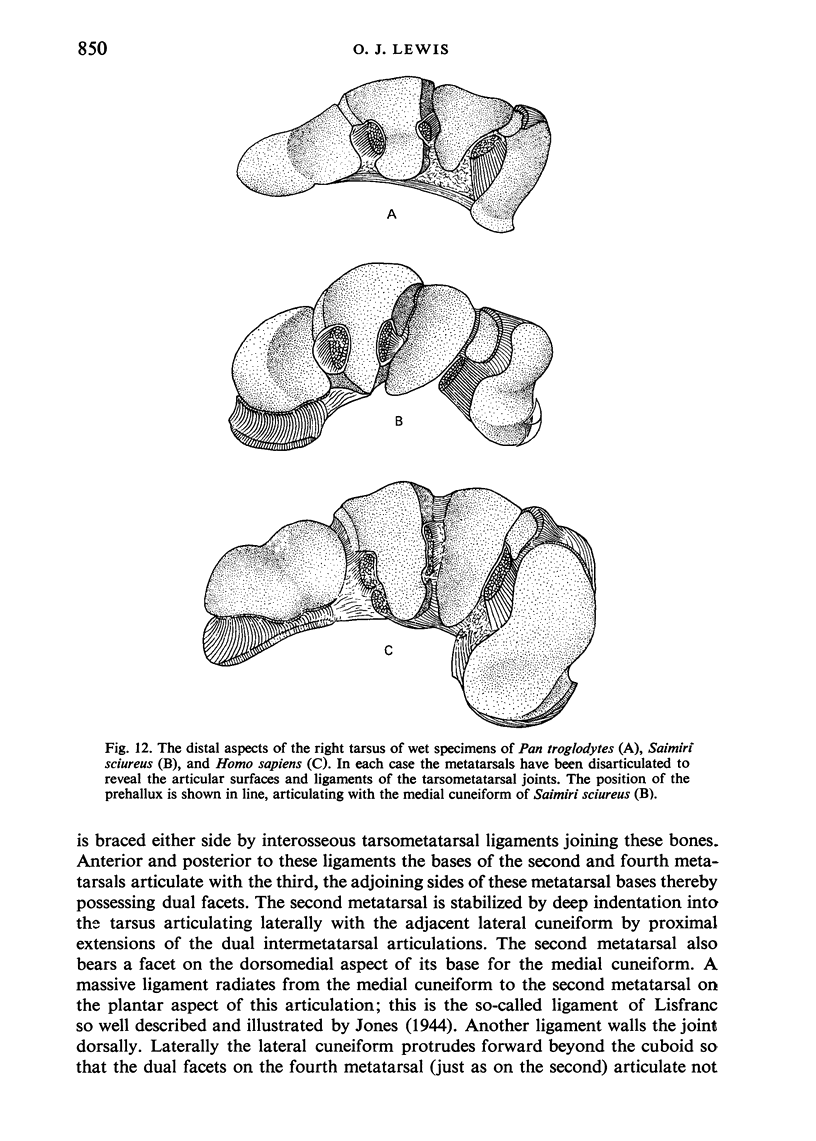

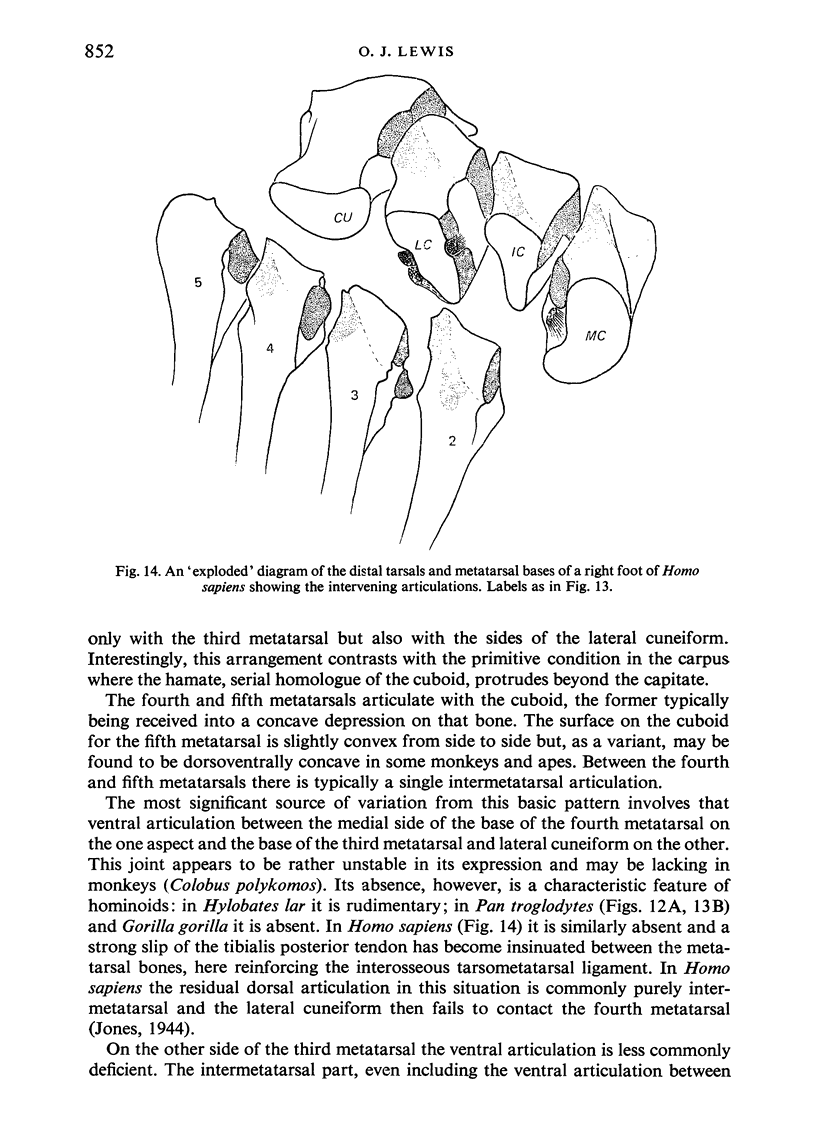
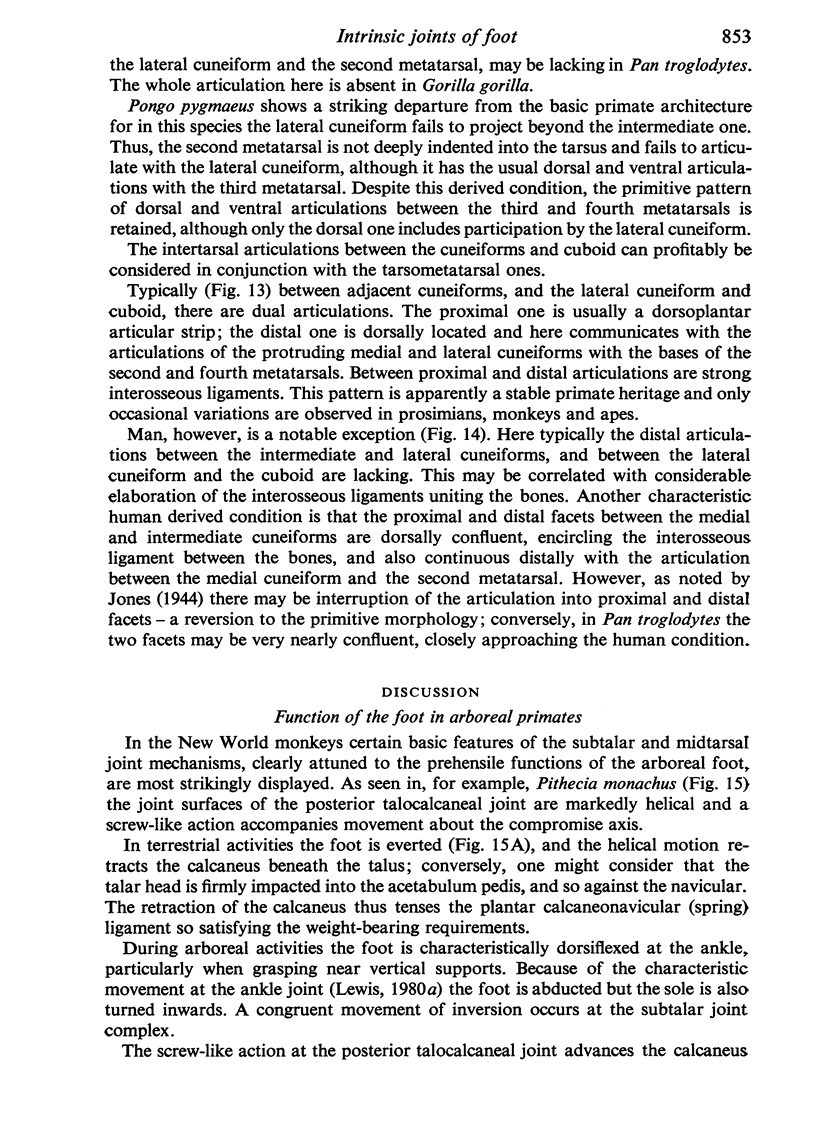
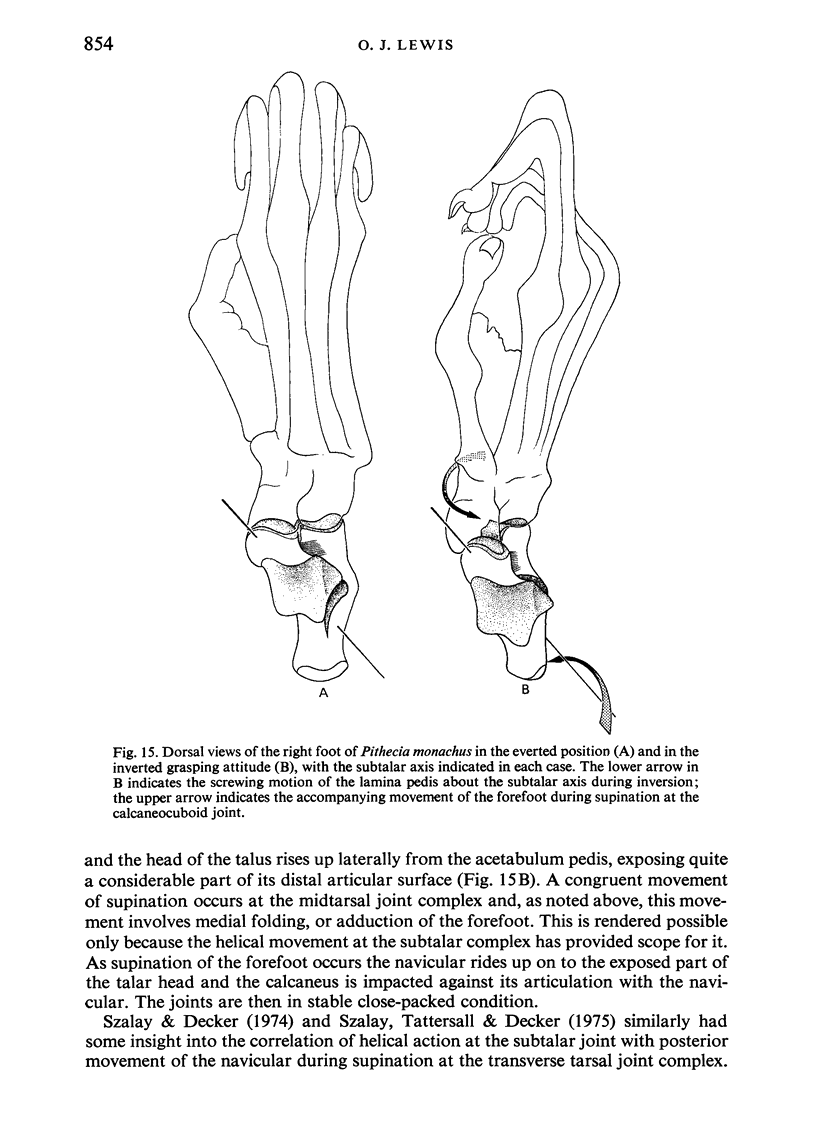
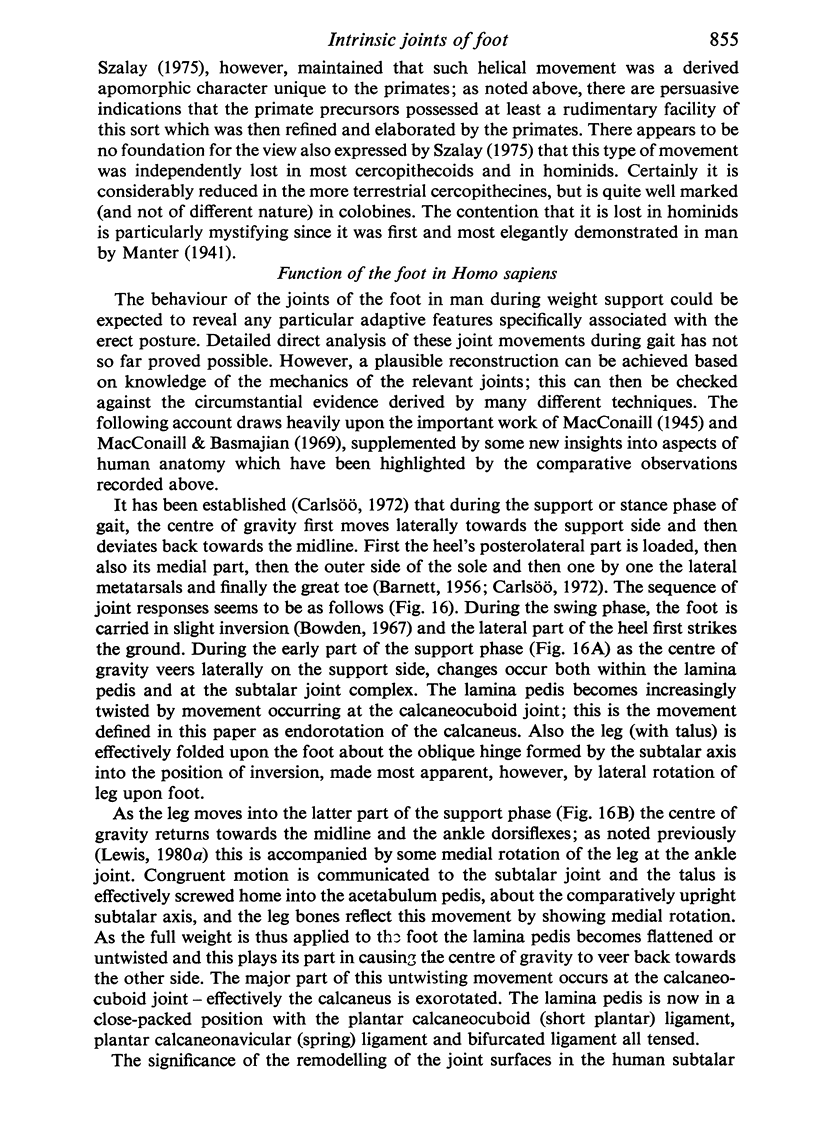
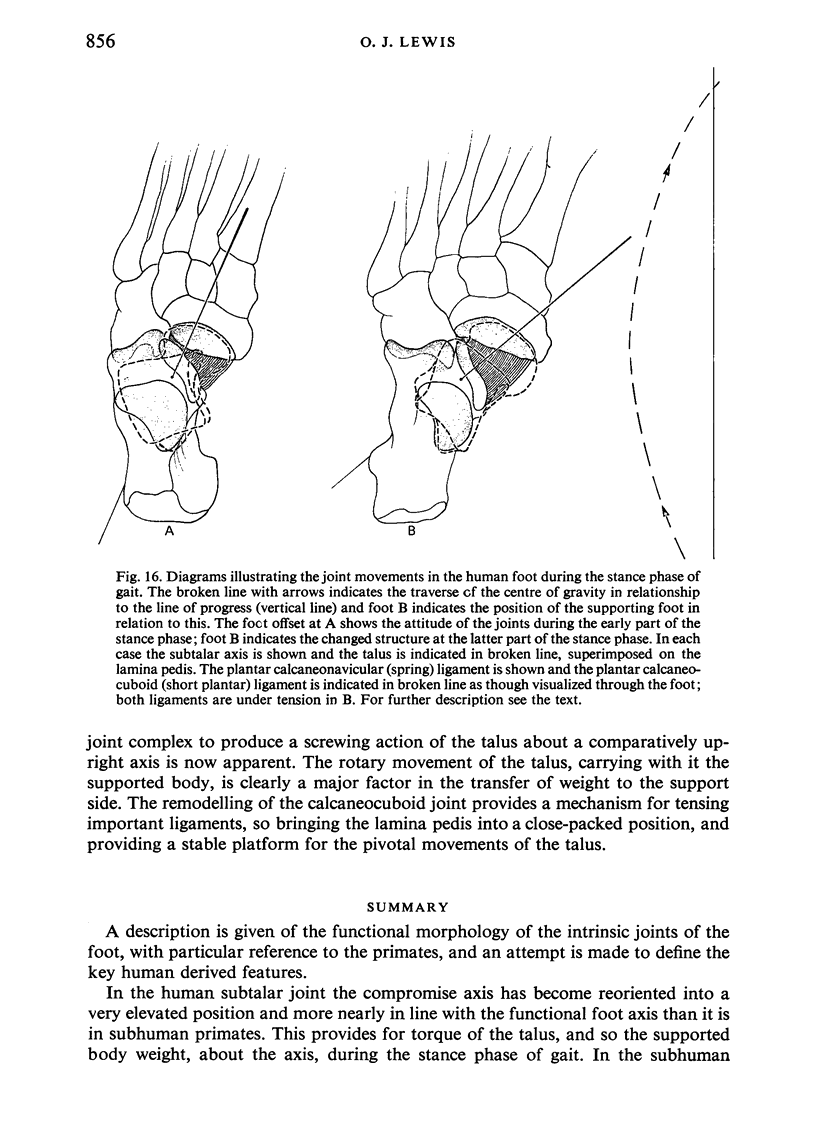
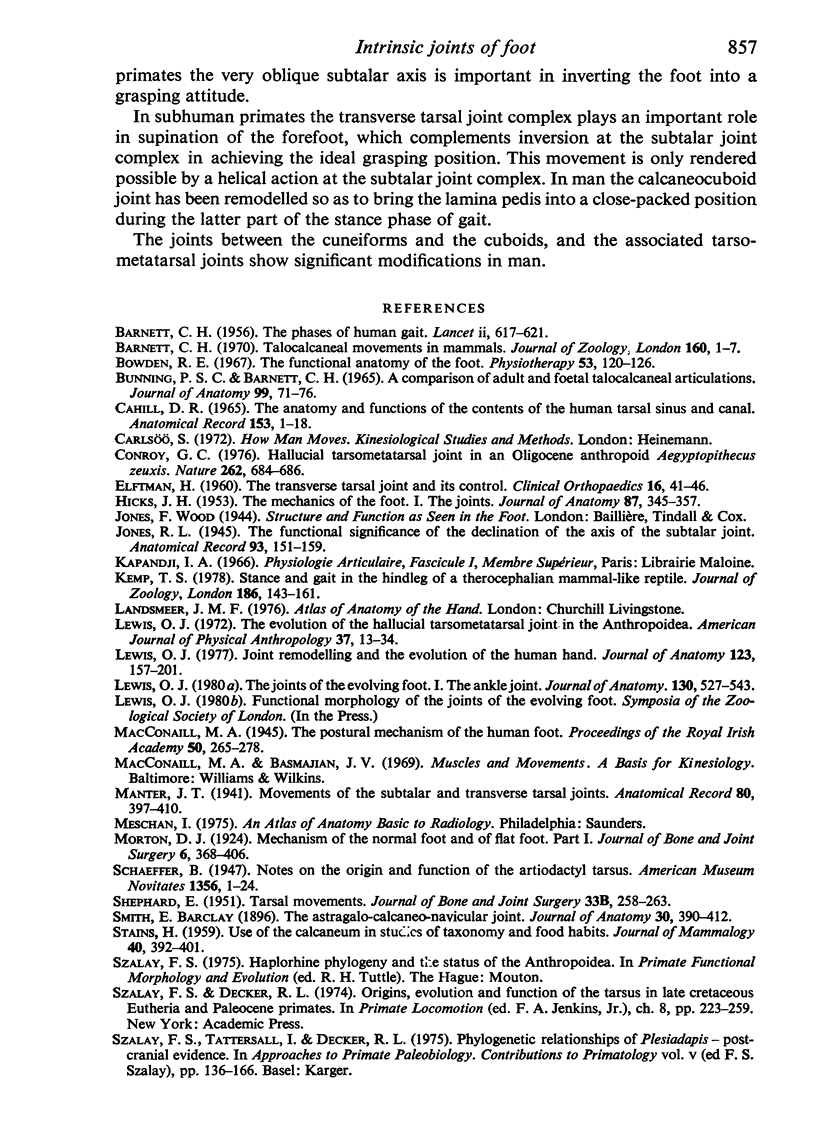
Selected References
These references are in PubMed. This may not be the complete list of references from this article.
- BARNETT C. H. The phases of human gait. Lancet. 1956 Sep 22;271(6943):617–621. doi: 10.1016/s0140-6736(56)92309-1. [DOI] [PubMed] [Google Scholar]
- BUNNING P. S., BARNETT C. H. A COMPARISON OF ADULT AND FOETAL TALOCALCANEAL ARTICULATIONS. J Anat. 1965 Jan;99:71–76. [PMC free article] [PubMed] [Google Scholar]
- Bowden R. E. The functional anatomy of the foot. Physiotherapy. 1967 Apr;53(4):120–126. [PubMed] [Google Scholar]
- Cahill D. R. The anatomy and function of the contents of the human tarsal sinus and canal. Anat Rec. 1965 Sep;153(1):1–17. doi: 10.1002/ar.1091530102. [DOI] [PubMed] [Google Scholar]
- HICKS J. H. The mechanics of the foot. I. The joints. J Anat. 1953 Oct;87(4):345–357. [PMC free article] [PubMed] [Google Scholar]
- Lewis O. J. Joint remodelling and the evolution of the human hand. J Anat. 1977 Feb;123(Pt 1):157–201. [PMC free article] [PubMed] [Google Scholar]
- Lewis O. J. The evolution of the hallucial tarsometatarsal joint in the Anthropoidea. Am J Phys Anthropol. 1972 Jul;37(1):13–33. doi: 10.1002/ajpa.1330370104. [DOI] [PubMed] [Google Scholar]
- Lewis O. J. The joints of the evolving foot. Part I. The ankle joint. J Anat. 1980 May;130(Pt 3):527–543. [PMC free article] [PubMed] [Google Scholar]
- SHEPHARD E. Tarsal movements. J Bone Joint Surg Br. 1951 May;33B(2):258–263. [PubMed] [Google Scholar]


